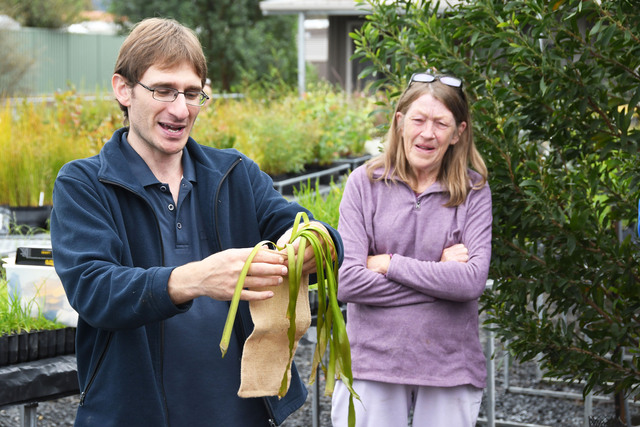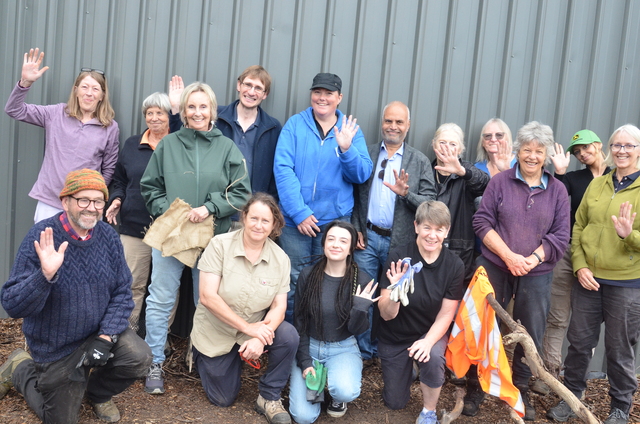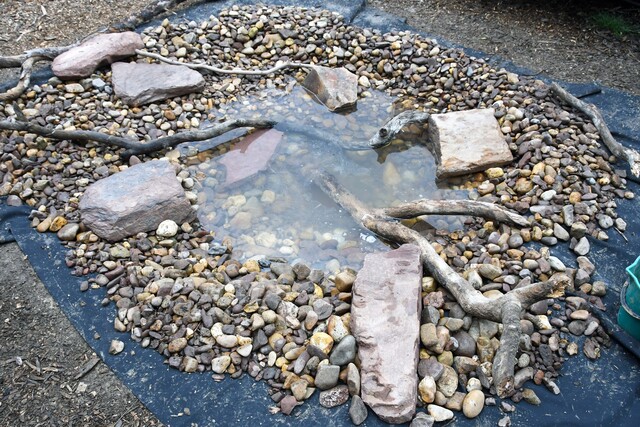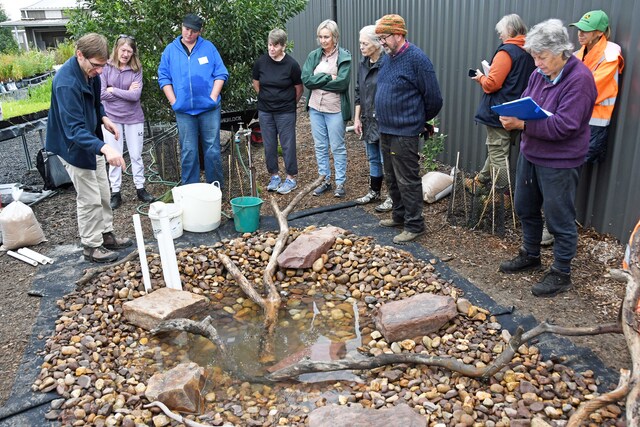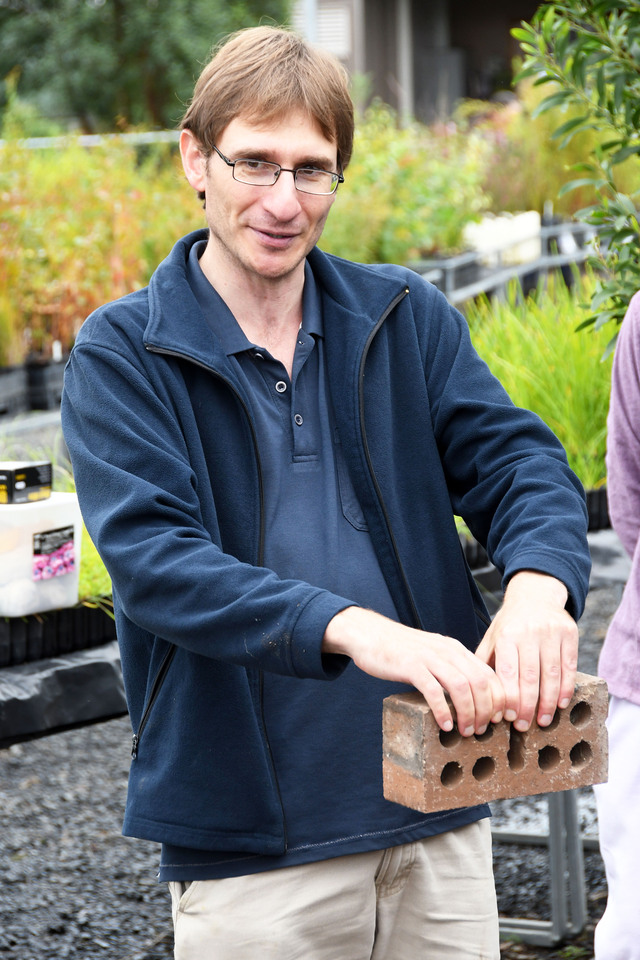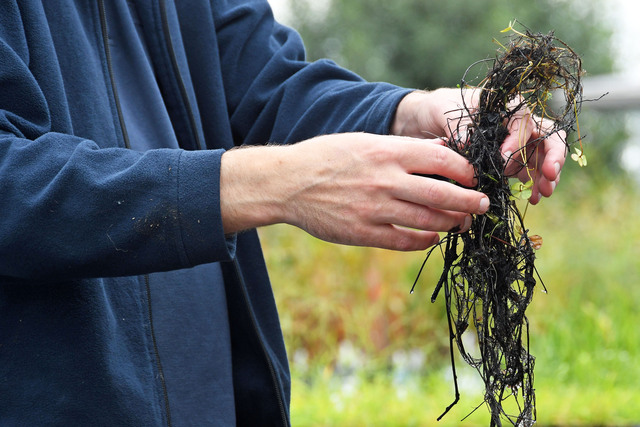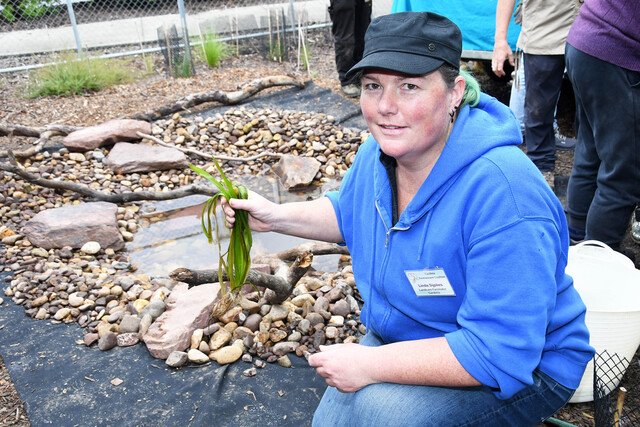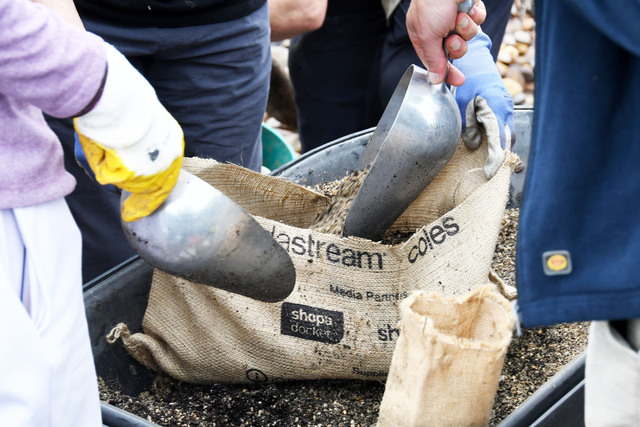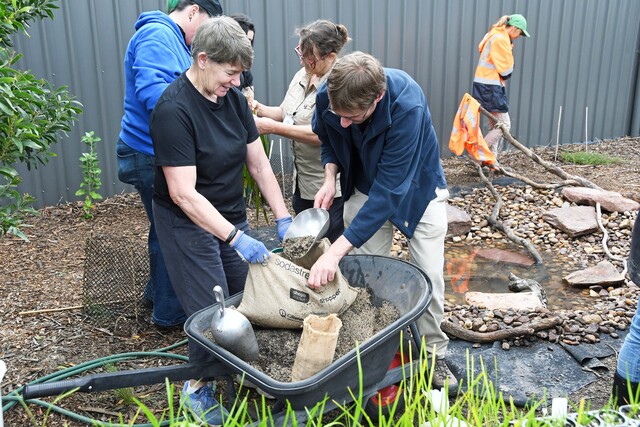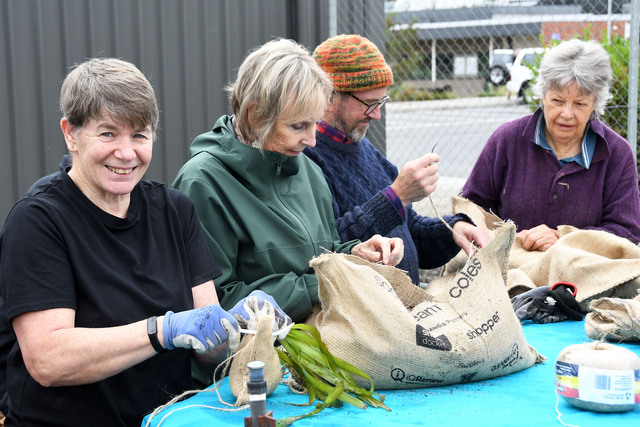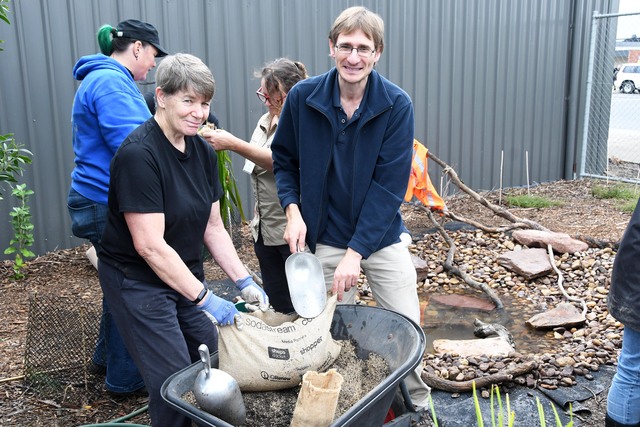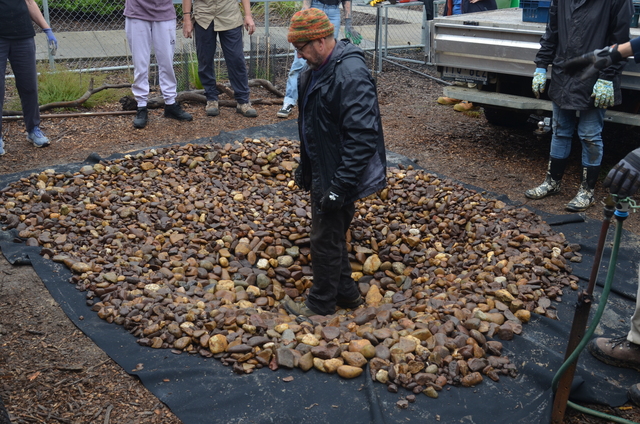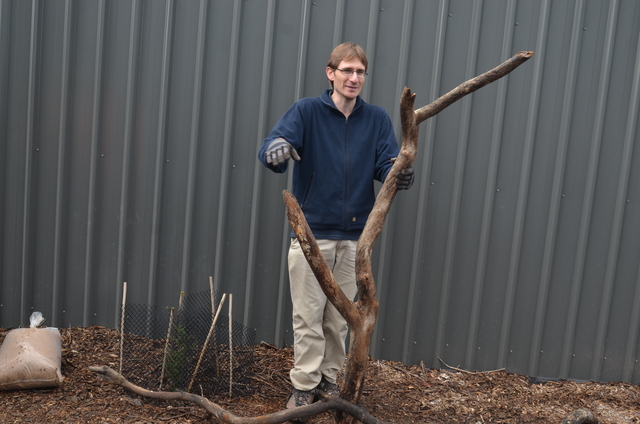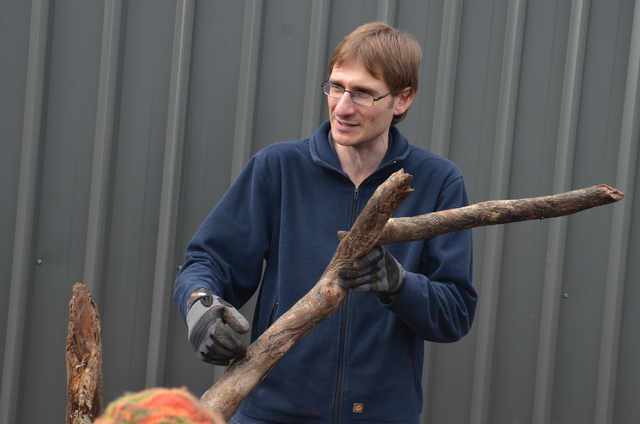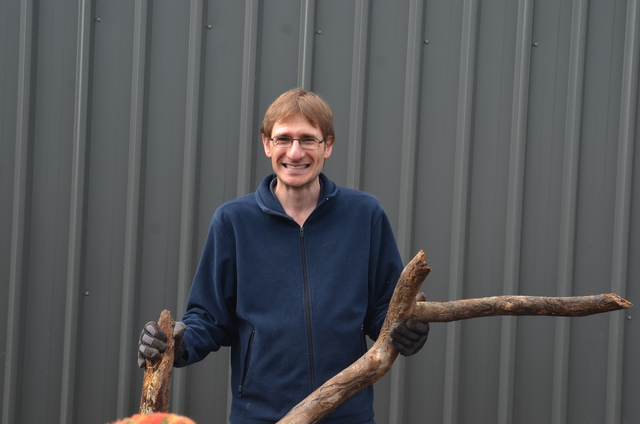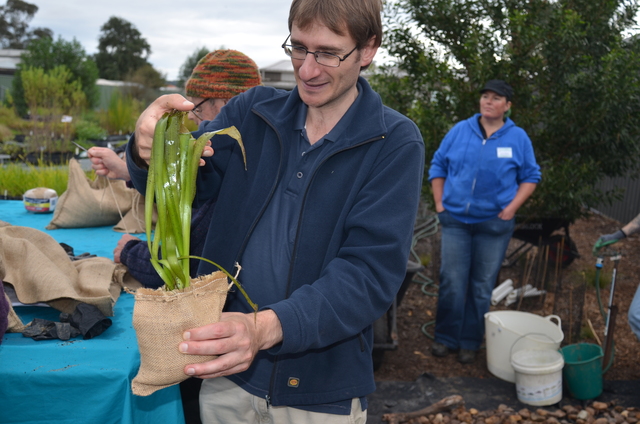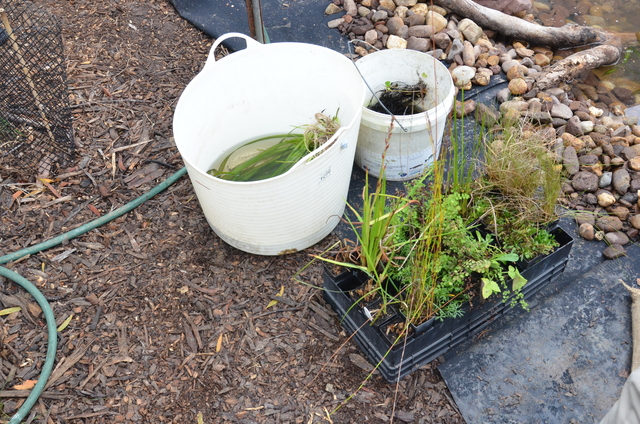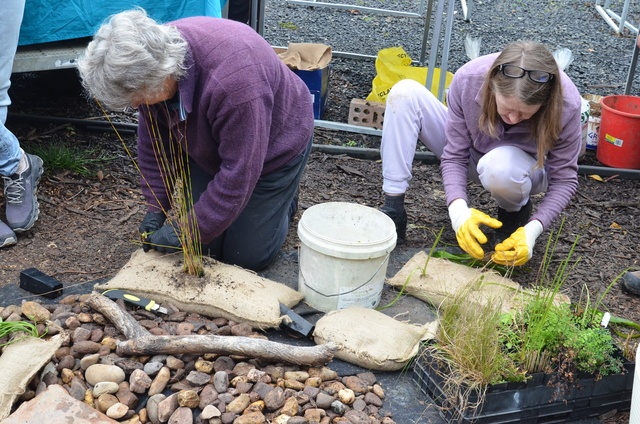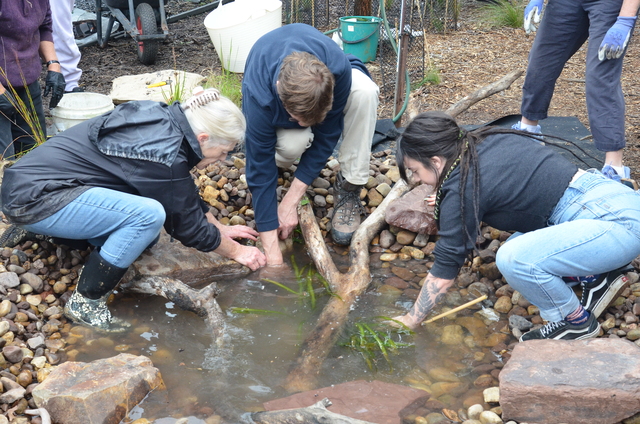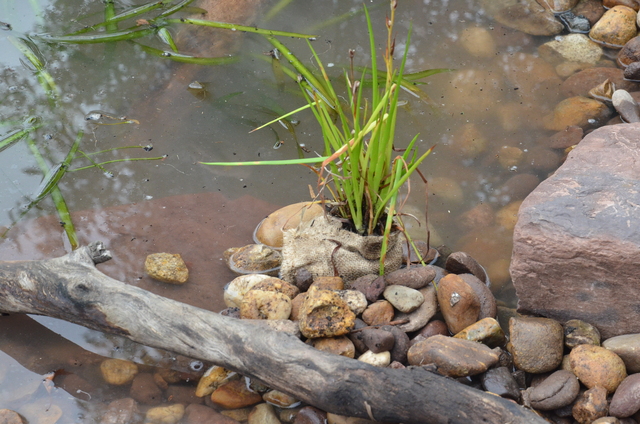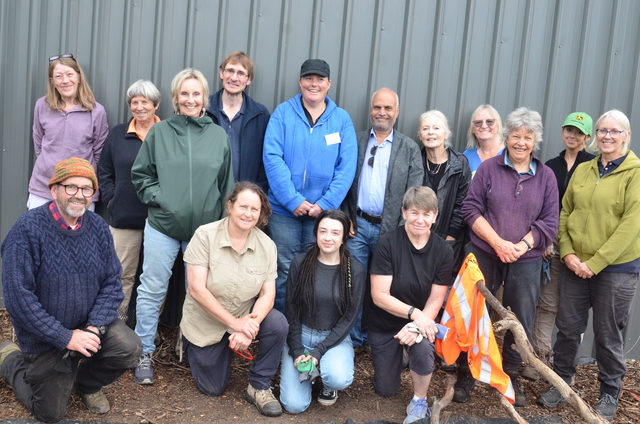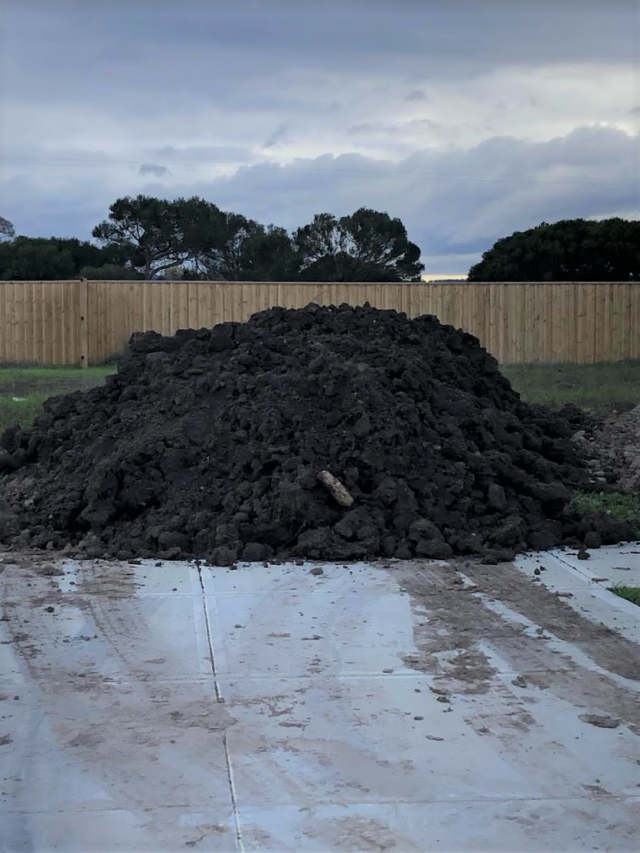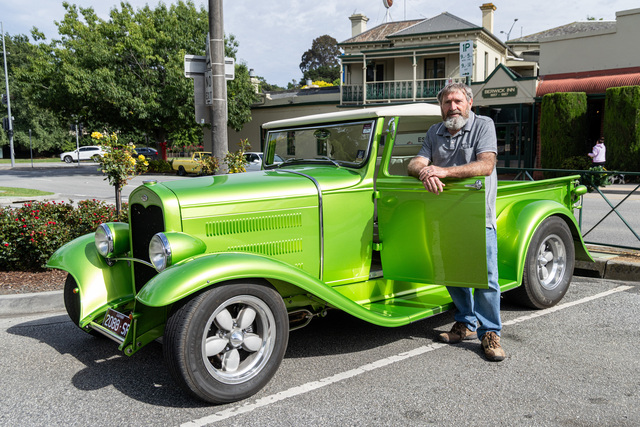PRECEDE: The first ever frog pond was built at Cardinia Environment Coalition Indigenous Plant Nursery on 26 April. Gazette journalist Afraa Kori captured the community’s enthusiasm and teamwork as the workshop ended with impressive results for the frog habitat.
BREAKOUT QUOTE: “It might only be a few weeks until they (frogs) find the pond and start breeding here. If the nursery were much further away from a frog population, it could potentially be many months or over a year.”
Members of the Cardinia Environment Coalition (CEC), the Australian Plants Society Cardinia Region Inc, local landcare groups, and farmers came together for a hands-on workshop at the CEC Nursery, where they assisted in the creation of a frog habitat.
The workshop, guided by David De Angelis, focused on designing frog-friendly ponds and understanding local frog habitat needs.
David, an environmental educator and zoological consultant, brought his expertise in ecological land management and frog conservation to the group. He is the current President of Frogs Victoria, teaches fauna survey and monitoring techniques for the Diploma of Conservation and Ecosystem Management at Holmesgen Institute, works with the ecological consultancy ABZECO, and collaborates on frog-related projects with La Trobe University’s Nangak Tamboree Wildlife Sanctuary.
David introduced participants to the process of creating ponds with varying water depths and gently sloping banks, helping tadpoles regulate their temperature and providing essential shelter and breeding sites. He also emphasized the importance of indigenous plants in creating a diverse and sustainable habitat, explaining how recent advances in understanding frogs’ habitat preferences can guide better pond design.
At the start of the workshop, David gave an insightful lecture on pond design, covering suitable pond liners, how to protect them, and adding features like rocks, logs, and leaf litter for shelter. He also introduced the concept of frog hotels—ground shelters that accommodate species unable to climb. After the lecture, attendees got hands-on, planning the pond layout and applying their new knowledge to the project.
During the planting stage, participants were guided to create a variety of microhabitats by using a mix of submerged, floating, and emergent plants, as well as small groundcovers and a few taller plants around the pond edges. Submerged vegetation was emphasised to provide shelter, food, and breeding sites for tadpoles. Plants were potted in soil-filled sacks or containers without fertilisers, using loam topped with sand and pebbles to avoid water clouding. Ensuring at least half of the pond surface remained open to sunlight was important for plant growth, healthy tadpole development, and preventing fungal infections. Participants were also advised to avoid overplanting with dense or invasive species like duckweed, azolla, cumbungi, and common reed in small ponds.
The key takeaway from the workshop was the evolving understanding of frog habitat needs, particularly the impact of chytrid fungus, a threat that had previously been overlooked in the past.
“What would be great for participants to take away with them is now a better understanding of the value that those different types of plants provide for frogs,” David said.
“They provide different types of habitat that are important not just for different species of frogs but for different stages of the life cycle.”
David also hopes the frog habitat will serve as a valuable case study, showing how additional breeding spaces can support local frog populations.
“Being at the nursery and at the Cardinia Environment Coalition’s base in Pakenham, they get a lot of visitors and people who want to,” he said.
“The biggest benefit will be educational but it will provide a benefit for the local frogs in this immediate area. They’ll now have a new breeding habitat that they can move into. It will provide them with an additional, I suppose, insurance habitat. So if for whatever reason other nearby wetlands dry up or become polluted, this pond might provide an additional refuge for those local frogs.”
Linda Sijpkes, CEC’s Landcare facilitator, shared that creating a pond in their nursery display garden to support frog habitat has been a dream and they are overjoyed to see it come to fruition.
“It has been a hope of ours,” she said. “Thanks to Anne and Gayle Savige from the Australian Plants Society – Cardinia Region we had an offer from David De Angelis to run a workshop to build the pond.”
She also acknowledged the Nursery Manager, Adele Richardson, who organised the volunteers to dig out the pond, sourced rocks and logs, and sourced aquatic and semi-aquatic plants for the frog habitat.
CEC President, Lindsay McNaught, said workshops like this help lift the community’s spirit, especially given the issues surrounding the closure of Pakenham Golf Course.
“We didn’t want to lose the momentum, so we’re trying to encourage things to happen in the community, just to keep some activity going,” he said.
“We will keep activity going for whatever number of months there is between the previous golf club and whoever takes over.”
David highlighted that the frog pond is about 90 per cent complete and the team now has the skills and knowledge to finish it independently.
“We’ve done the deepest part, the submerged,” he said with excitement.
“They’ll need to plant shallow-water species and trim the liner to allow planting right up to the water’s edge.“
“Mostly low-growing plants will be used to keep enough sunlight on the water for the frogs.“
Additionally, participants learned they must maintain the pond by protecting it from predators like cats, avoiding the introduction of fish and chemicals, and not relocating frogs or tadpoles to prevent disease. Instead, they were encouraged to work with neighbours to improve habitat connectivity, allowing frogs to naturally migrate to the pond.
The most exciting news? Frogs could appear in the pond soon! When asked, “when do you think the frogs will appear?“ David explained that it depends on several factors, including the proximity of nearby frog populations.
“We know that there are frogs already in the nursery because it’s very well watered,” he said.
“It might only be a few weeks until they (frogs) find the pond and start breeding here. If the nursery were much further away from a frog population, it could potentially be many months or over a year.”

